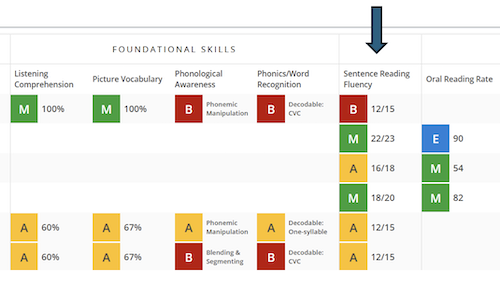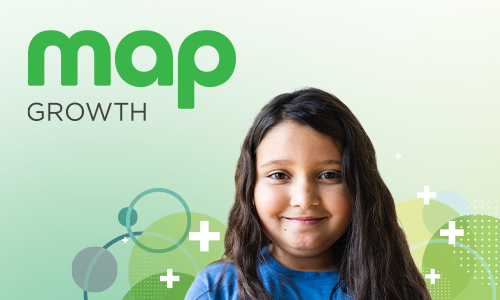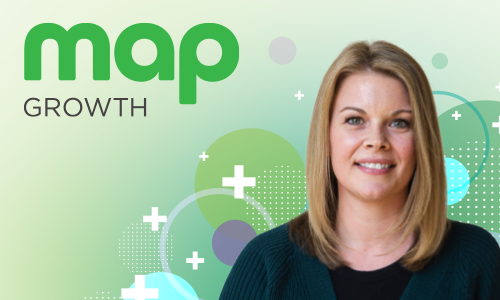 The new year often brings a flurry of parent-teacher conferences, and with that comes the challenge of talking about assessment data in meaningful, actionable ways. These conversations can be nerve-wracking for teachers and families alike, especially when data feels overwhelming. But here’s the good news: with a little preparation and some proven strategies, you can confidently use data to foster trust, collaboration, and student growth.
The new year often brings a flurry of parent-teacher conferences, and with that comes the challenge of talking about assessment data in meaningful, actionable ways. These conversations can be nerve-wracking for teachers and families alike, especially when data feels overwhelming. But here’s the good news: with a little preparation and some proven strategies, you can confidently use data to foster trust, collaboration, and student growth.
With the help of my colleagues Lauren Wells and Ayesha Kashim, I’ve compiled insights from countless professional learning sessions with educators around the globe to create this guide to simplifying data-sharing in the conference setting. Save it to your bookmarks and refer to it when you need a boost before meeting with families.
Demystifying MAP Growth data
To set the stage for meaningful conversations, it’s important to understand the basics of MAP® Growth™ data. Here are the key concepts to help families (and teachers!) make sense of student progress.
Achievement vs. growth
Achievement reflects a student’s RIT score and compares it to peers nationwide. Achievement percentile indicates how well a student performed compared to others in their grade and test group.
Growth measures a student’s improvement over time. The growth percentile shows how a student’s progress compares to others’. Use the conditional growth index to see how their growth stacks up against expectations.
Key reports for teachers and families
The MAP Growth Student Profile report consolidates data for each student, showing their scores across all tested subjects and terms. It’s great for goal setting and tracking progress over time. Meanwhile, the Family report offers a streamlined, family-friendly summary of key test results. You can access it via the student profile or reports page and print it for individual students or entire classes.
Pro tip: Use the Family report to communicate not just where a student is, but what’s next for their learning journey. Investigating instructional areas and setting goals can turn a dry conversation into an exciting roadmap for success.
Resources to build your confidence
Whether you prefer quick videos, detailed guides, or interactive courses, there’s a resource to help you master the MAP Growth interface and reporting tools.
For those who enjoy visual aids, our video on getting started with MAP Growth offers a great introduction. If you prefer written instructions, our MAP Reports reference guide helps narrow which MAP Growth report to use and provides step-by-step instructions.
Educators looking for a deeper dive can explore professional learning courses like MAP Growth Foundations online. Additionally, quick refreshers such as our article on using MAP Growth data or tips on the Class Profile report can keep you informed and prepared.
Bookmark these links so you can focus on your students instead of hunting for resources.
Do’s of data-based parent-teacher conferences
When it comes to sharing assessment data, a thoughtful approach can make all the difference. Here are some tried-and-true tips.
DO plan your explanation
Parents and guardians may not be familiar with MAP Growth—and you have a lot of conferences to get through!—so having a prepared explanation is key. Try these:
- “MAP Growth is a computer-adaptive test that helps us understand your child’s academic level and growth over time. It adjusts questions based on responses, ensuring every student is challenged appropriately. The RIT score helps us track their progress and set personalized goals.”
- “This assessment gives us valuable insights into how your student is performing and growing compared to their peers nationwide. It helps us tailor instruction to meet their needs, whether they need support or enrichment.”
Consider printing out copies of our “Family guide to MAP Growth” fact sheet to send home with caregivers.
DO frame the data effectively
MAP Growth scores are part of a larger story, and it helps families to know that data is a component in an ecosystem of information. Numbers alone can overwhelm families. Instead, position the data from a “So what?” perspective:
- Achievement score. “This lets us know how your child compares to the national average. This score gives us individual information on supporting your student, and it also helps us spot trends that guide school decisions.”
- Growth score. “This score illustrates how your child has progressed over time, both year after year and within the year itself. We always want this trending upward.”
- Teacher’s role. “Here’s what we’re doing to support your child’s growth.” This is where you can share what specific strategies you’re employing in your classroom and support center to offer additional help or enrichment to a particular student. Maybe you explain a quick finisher supplemental folder of activities in your classroom, a digital instructional tool that offers individualized pathways for practice, or an extension project you’ve assigned to a high flier.
DO offer actionable steps
Parents and other caregivers want to help their children succeed but might not know where to start. Use MAP Growth results to identify specific skills students might need help with, and provide practical, concrete suggestions for how to bolster those skills. Other suggestions include:
- Setting aside structured “here is your at-home desk” homework time
- Exploring online resources like Khan Academy and Learning Heroes for skill-building
- Discussing storytelling at home, even if it’s focused on TV show or movie themes, characters, points of view, and other literary devices
- Turning on the subtitles when you watch something together
DO provide follow-up options
Teachers, however blurry the back-to-back parent-teacher conferences seem to you, they can seem equally frenetic to parents. It can sometimes activate a guardian’s scarcity mindset that this is the only time they’ll have access to their child’s teacher. Add that to the panic they might feel from encountering data they don’t quite understand, and many families may walk out of a conference wondering “What just happened?”
Make sure families know how to get in touch with you (even if it’s just rewriting your email address). If there are any digital gradebooks or online tools they can use to monitor their child’s progress, offer a printed guide on how to log on (even if it’s been provided before). For children who need a bit more support, consider offering a 10-minute conference follow-up online. This way, parents and other caregivers can breathe into the moment of this current conference and not feel this is the last time they have to ask their questions.
DO consider online options
Not all families can attend in-person conferences, so consider offering virtual meeting options. If a family cannot attend, send the Family report home with a video or written explanations.
If you haven’t yet begun a class website or digital bulletin board, now might be a good time. So many parents can increase engagement if resources—not just assessment results—are available after hours.
DO encourage student-led conferences
Empowering students to take ownership of the conference maximizes the moment. Help them prepare by reflecting on their scores and setting goals. Sentence starters can be completed ahead of time, like:
- “I feel proud of myself for ______ because it shows how much I’ve grown in ______.”
- “Looking at my scores, I feel confident in ______, but I know I need more practice with ______.”
- “After reviewing my assessment, I realize I need to ask for help with ______ to get better at ______.”
- “In the future, I want to focus on ______ to improve my skills in ______.”
During the conference, students can share what their scores mean to them, what they’re proud of, and where they want to improve. Including portfolio pieces that showcase their growth adds a personal touch and helps families see their achievements in action.
Ready, set, conference!
With a little preparation, parent-teacher conferences can be transformative moments that build trust and strengthen the school-home partnership. Use these tips, tools, and resources to guide your conversations with families, and watch how your confidence—and theirs—grows.
For more tips on partnering with families, visit our archive of posts on supporting families here on Teach. Learn. Grow.






